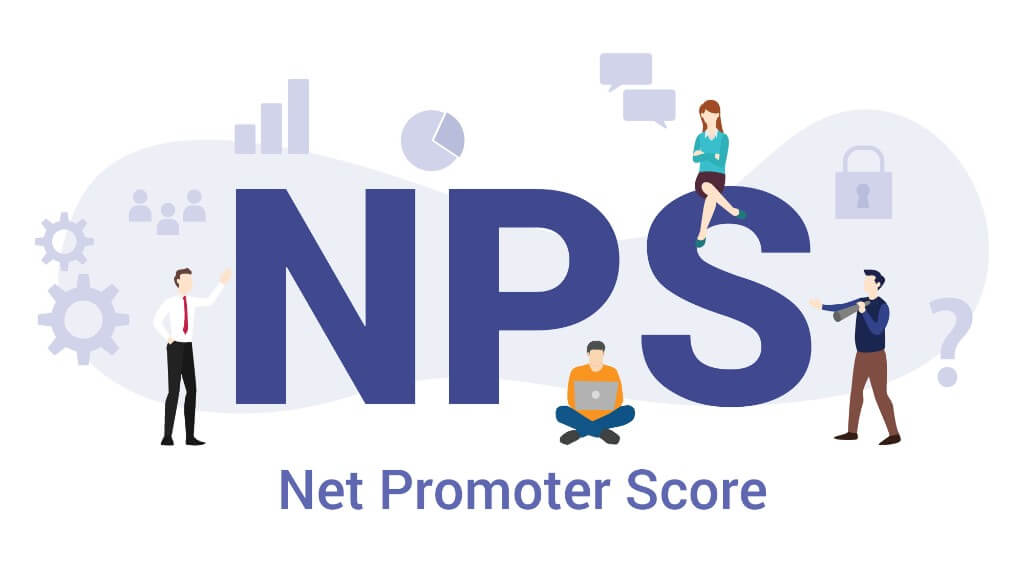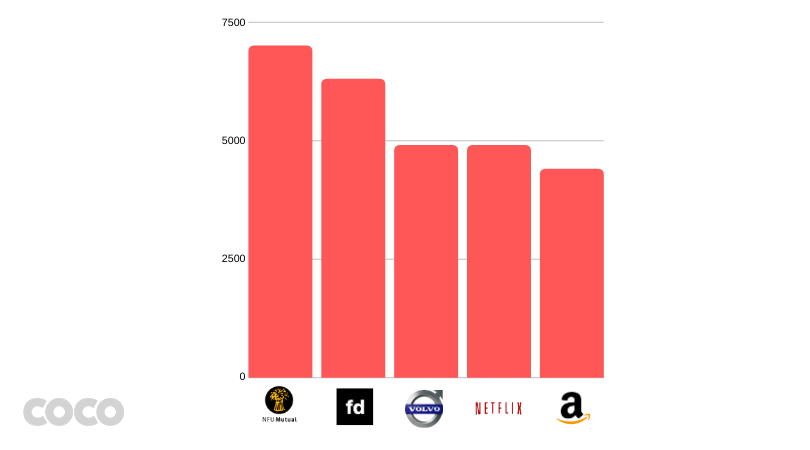Complete Guide about Net Promoter Score or NPS

If you work (or are curious about) marketing, you might have wondered what is Net Promoter Score or NPS. This is often held up as the gold standard customer experience metric, as it’s used by millions of businesses to measure and track how they’re perceived by their clients.
Net Promoter Score definition
According to their creators Bain & Company, Fred Reichheld and Satmetrix:
Net Promoter Score measures customer experience and predicts business growth. This proven metric transformed the business world and now provides the core measurement for customer experience management programs the world round.
What is Net Promoter Score or NPS?
According to Qualtrics, it measures customer perception based on one simple question:
How likely are you to recommend this product/company to a friend or colleague on a scale from 0 to 10?
Customers give a rating between 0 (not at all likely) and 10 (extremely likely) and, depending on their answer, fall into a specific category to establish an NPS score:
- Detractors respond with a score of 0 to 6. These are unhappy customers who are unlikely to buy again, and may even discourage others from buying.
- Passives answer with a score of 7 or 8. They’re satisfied with the service but not happy enough to be considered promoters.
- Promoters respond with a score of 9 or 10 and are typically loyal and enthusiastic clients.

Why is NPS important?
NPS can be used to predict the business’ growth. When a company’s NPS is high, it means that it has a healthy relationship with customers who are likely to act as ‘evangelists’ for the brand, fuel word of mouth, and generate a positive growth cycle.
NPS is a valuable metric on a strategic level, but by itself, the score isn’t enough to be useful or paint a complete picture. This KPI is very related to the Brand Awareness. The overall NPS system is important because it allows organisations to:
- Ask follow-up questions as part of the standard NPS survey. By asking customers why they've given a specific score, companies of any size can understand what they're doing well and where they could be improving.
- Track and quantify a score over time, creating internal benchmarks.
- Focus all employees on one mission-critical objective: earning more enthusiastic customers.
How to calculate Net Promoter Score
Now that you know what is Net Promoter Score is, a simple Net Promoter Score calculation is subtracting the percentage of those who answer the NPS question with a 6 or lower from the percentage of those who answer with a 9 or 10.
Net Promoter Score formula

How to interpret Net Promoter Score
Net Promoter Score is always expressed as a number from -100 to 100. If a company has more detractors than promoters the score is negative, and positive in the opposite situation. In the NPS system, average scores vary vastly between industries.
According to the first UK Consumer Study shared by the creators of the term with Marketing Week the sectors rank as follow.
STRONGEST NPS
WEAKEST NPS
Tech (36)
Logistics (-13)
Automotive (31)
Energy (-10)
Media (25)
Water (-8)
Obviously, knowing NPS averages by industry helps to understand how key competitors in a certain market are doing and gives extra context to what counts as a ‘good’ or ‘bad’ score.
Even if the bar is set low, a negative NPS is a sign that a business has some serious work to do to improve the situation, reduce the number of unhappy customers, and generate more promoters.
What is a good NPS score?
Any score above 0 (given the available -100 to +100 range) reads as ‘good’ because it indicates that a business has more promoters than detractors.
What is a bad NPS score?
Any score under 0 indicates that a company has more detractors than promoters, thus is ‘bad’.
Net Promoter Score advantages
Now that you know what is Net Promoter Score, this system has plenty of benefits:
- It’s easier to benchmark against competitors.
- It’s a great way to track change over time.
- It’s simple, user-friendly and inexpensive to implement.
- It gives direction for change and improvement.
- It’s relevant to everyone.
- It provides the big picture.
- It measures the likelihood of repeat business.
Net Promoter Score disadvantages
But on the other hand, NPS also has some limitations:
- There is dissent over the efficiency of NPS across industries.
- There is debate regarding the statistical validity of collapsing an 11-point scale into three components, as it may lead to loss of information in the middle ranges.
- NPS doesn’t guarantee that a client giving a score of 10 will 'promote' the business.
- It’s difficult to quantify a customer’s loyalty.
Top 5 UK companies according to their NPS
Only 10% of brands in the UK have a NPS of 40 or more. They usually have a positive ROI.

Things to consider when using NPS for your business
According to Zonka, the trick in measuring NPS lies in understanding what it means for your business. You should keep in mind the next factors:
- NPS is only an indicative measure of a customer’s loyalty, not their overall satisfaction with the company’s product or service. A full customer feedback survey would be ideal.
- NPS is just a number that will only mean something if there are ambition to turn the company more customer-centric.
- If you get customer feedback, then act on it and communicate with the client.
- It is imperative to close the feedback loop. If you take a customer's feedback, it is important to act on it and communicate with the customer.
In short, knowing what is Net Promoter Score is extremely important to get more loyal customers that can ‘serve you’ as promoters of your brand. But if you don’t take the feedback seriously, then NPS will be pointless.







![Mejores agencias de desarrollo web en Chile [2025]](/cms/uploads/mejores_agencias_desarrollo_web_chile_2025-1200-swxn0q.png)
